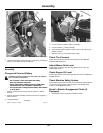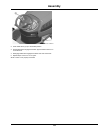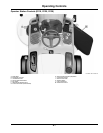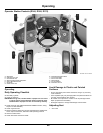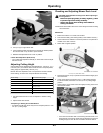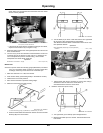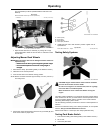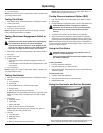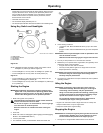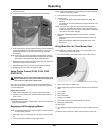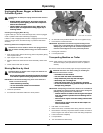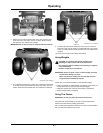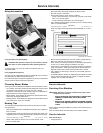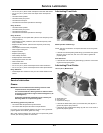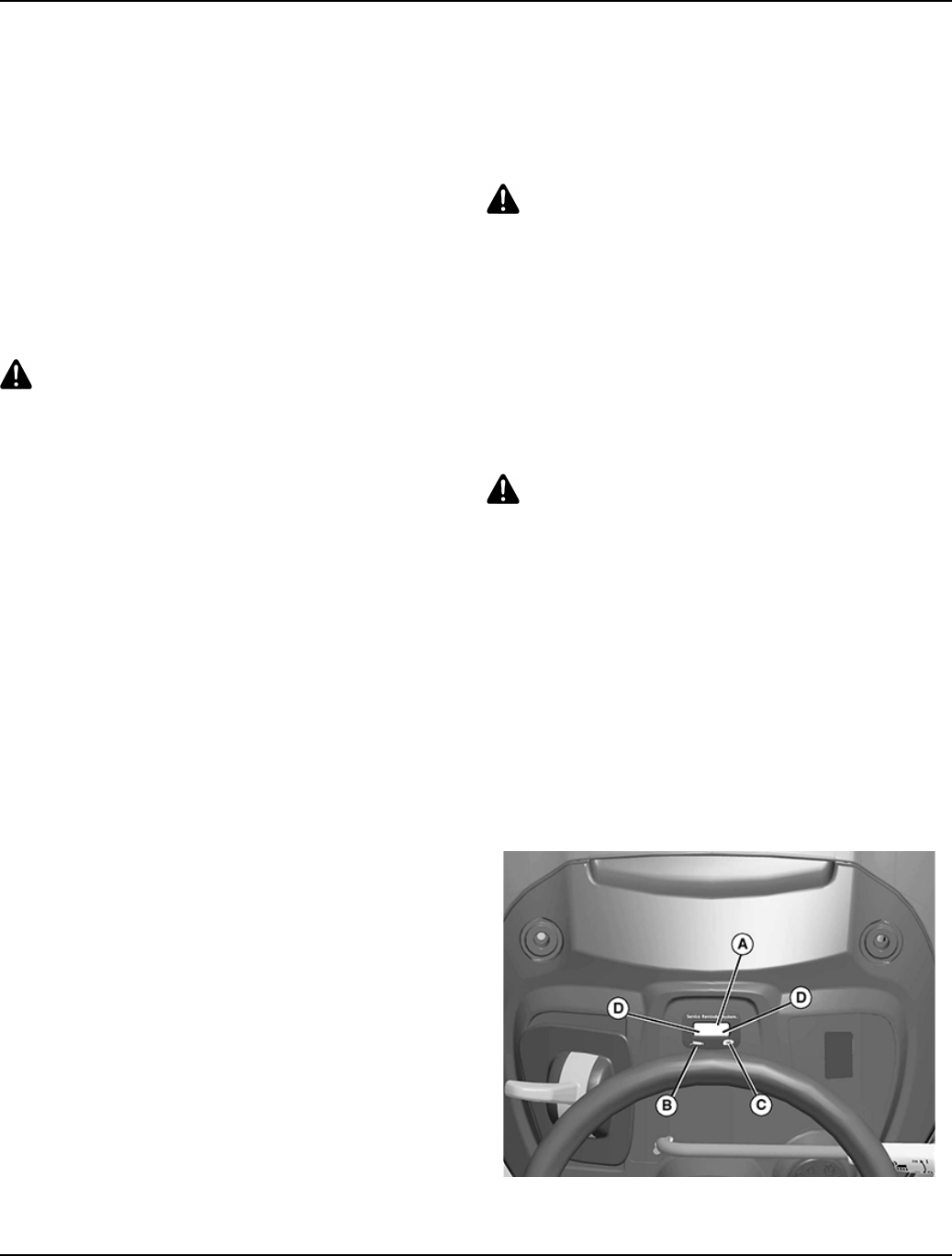
4. Try to start engine.
Result: Engine must not crank. If engine cranks, there is a problem with
your safety interlock circuit.
Testing Park Brake
1. Park machine safely. (See Parking Safely in the SAFETY section.)
2. Lock the park brake.
3. Engage bypass valve control.
4. Try to push machine manually.
Result: Park brake must prevent machine from moving. If machine
moves, parking brake needs to be adjusted.
Testing Attachment Engagement Switch or
Lever
CAUTION: The mower blades should stop in approximately
ve seconds when the mower or PTO is disengaged.
If you believe that your blades may not be stopping in that
period of time, take your machine to your authorized dealer
where they can safely check and service your machine.
1. Park machine safely. (See Parking Safely in the SAFETY Section.)
2. Sit on seat.
3. Lock the park brake.
4. Engage mower:
• On models with electric attachment engagement switch, pull
switch up.
• On models with mechanical attachment engagement lever, push
lever forward.
5. Try to start engine.
Result: Engine must not start. If engine starts, there is a problem with
your safety interlock circuit.
Testing Seat Switch
1. Park machine safely. (See Parking Safely in the SAFETY Section.)
2. First test:
a. Lock park brake.
b. Start engine.
c. Move throttle lever up to maximum engine speed.
d. Engage mower.
e. Raise up off seat. Do not get off machine.
Result: Engine and mower blades should stop. If engine and mower
blades do not stop, there is a problem with your safety interlock
circuit.
3. Second test:
a. Disengage mower.
b. Start engine.
c. Unlock park brake.
d. Raise up off seat. Do not get off machine.
Result: Engine should stop. If engine does not stop, there is a
problem with your safety interlock circuit.
4. Third test:
a. Lock park brake.
b. Disengage mower.
c. Start engine.
d. Raise up off seat. Do not get off machine.
Result: Engine should continue to run. If engine stops, there is a
problem with your safety interlock circuit.
Testing Reverse Implement Option (RIO)
1. Park machine safely. (See Parking Safely in the SAFETY section.)
2. Start engine.
3. Engage attachment engagement switch or lever to start attachment.
CAUTION: Rotating blades are dangerous. Children or
bystanders may be injured by runover and rotating blades.
Before backing up, carefully check the area around the
machine.
4. Look behind the vehicle to be sure there are no bystanders.
5. Begin reverse travel by depressing reverse pedal for hydrostatic
transmission or moving the transmission shift lever to the rear slot
(reverse) position for automatic transmission and depressing pedal.
Result: Attachment and engine should stop operation. If attachment or
engine continues to operate as machine begins travel in reverse, do not
continue to operate machine.
Using the Park Brake
CAUTION: Children or bystanders may attempt to move or
operate an unattended machine.
Always lock the park brake and remove the key before leaving
the machine unattended.
Locking park brake:
1. Push and hold brake pedal down.
2. Pull park brake lever up to lock park brake.
3. Release brake pedal. Pedal should stay down and park brake lever
should stay locked.
Unlocking park brake:
1. Push and hold brake pedal down.
2. Push park brake lever down to unlock park brake.
3. Release brake pedal.
Using the Hourmeter and Service Reminder
GXAL41991—UN—04MAR13
• The hourmeter (A) shows the number of hours the engine has run. The
service reminder will indicate that a general lubrication (B) or
Operating
26



